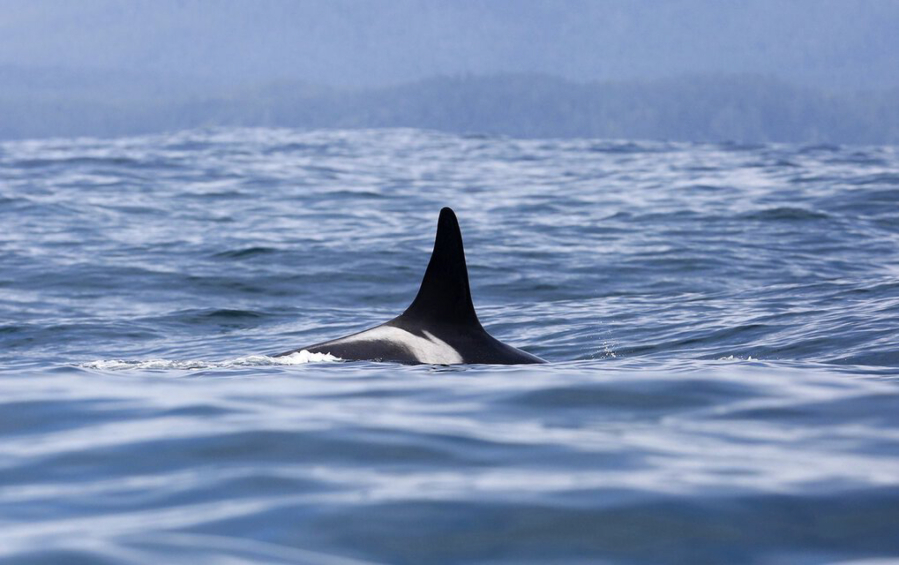Only 73 southern resident orcas remain along the coast of Oregon, Washington and British Columbia as of July 1, according to the latest census from the Center for Whale Research.
That’s one of the lowest population counts among the J, K and L pods of whales since 1974, when 71 orcas were counted following a live-capture fishery in the 1960s, according to the National Oceanic and Atmospheric Administration. The population peaked at 98 in 1995, but declined by almost 20% in the late ‘90s, leaving 80 whales in 2001.
In 2020, 72 southern resident killer whales were tallied.
In the last year, three whales died — K21, K44 and L89. Two calves were born in February and April. K20’s calf was the first baby the K pod has seen in 11 years.
The census found the L pod, composed of 32 orcas, at its lowest point since the study began in 1976.
The K pod is at its lowest in the last two decades, at 16 whales.
The J pod saw no deaths and now totals 25.
“The continued decline of L and K are both really concerning,” said Michael Weiss, research director for the Center for Whale Research. “It’s hard to say why one is OK and the others aren’t.”
The southern residents live in matriarchal families split in three pods: the J pod, K pod and L pod. They typically stay along the western coastal islands of Canada, Washington and the Oregon Coast.
At the top of the food chain, the southern residents have an important role in the ecosystem.
In 2005, the southern residents were listed as endangered under the Endangered Species Act and a recovery plan was finished in 2008.
In 2015, they became one of NOAA’s “Species in the Spotlight,” an effort to raise awareness and save “the most highly at-risk marine species.”
“The population has been sort of fluctuating along, and the way we’re trending now is in decline,” said Brad Hanson, a NOAA wildlife biologist. “It’s one of these situations where we don’t necessarily understand why we’re losing some of these animals.”
Generally, the southern residents are struggling to survive in the face of at least three threats: lack of Chinook salmon in their foraging range, pollution and underwater noise that makes it harder for them to hunt.
The salmon supply could be one reason some pods are faring better than others. The different pods have different “movement patterns” and thus differences in the salmon runs they rely on, Center for Whale Research’s Weiss said.
Former Lummi Nation chair Jay Julius, 47, said he remembers when the orcas were “plentiful.”
He grew up fishing side-by-side with the southern residents on the west side of the San Juan Islands. Then, he said, the orcas weren’t thought of as dwindling.
Now, Chinook salmon, the southern residents’ primary food source, are in decline. Under 500,000 adult Chinook were estimated to have passed through the Salish Sea in 2018 — a 60% reduction since 1984.
Today, human interests, like agriculture and development, have taken precedence over killer whales.
Estuaries — a refuge for growing juvenile salmon — were diked and drained to create farmland. Freeways, cities and neighborhoods were built atop wetlands.
Critical habitat for orcas’ prey needs to be recovered, said Ken Balcomb, founder of the Center for Whale Research.
Before those conservation goals are met, the southern resident population could possibly plunge below two dozen, he said.
As long as there are a few females capable of reproduction, it’ll be possible to maintain the population, Balcomb said. Recent births among the southern residents have skewed heavily male.
The center’s census details the fate of the orcas lost this year. K21 was last seen “severely emaciated” in the Strait of Juan de Fuca in July 2021. He was declared dead after he failed to appear alongside others he socialized with.
K44 was alive as of this spring, but was not seen in subsequent encounters with his family. According to the center, the body of a juvenile killer whale with markings consistent with K44 was found entangled in what appeared to be crabbing gear off the Oregon Coast in late June. He has not been formally identified, the center reported.
L89 was not seen in 2022.
The report shows at least a few signs of hope, Weiss said. The J and K pods both produced one female calf each.
“These are genuine things to celebrate and to be happy about,” he said.
This week, the J pod has been back out near the San Juan Islands socializing and foraging, Weiss said. “They’re looking good to me, behaviorally.”



